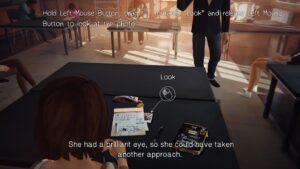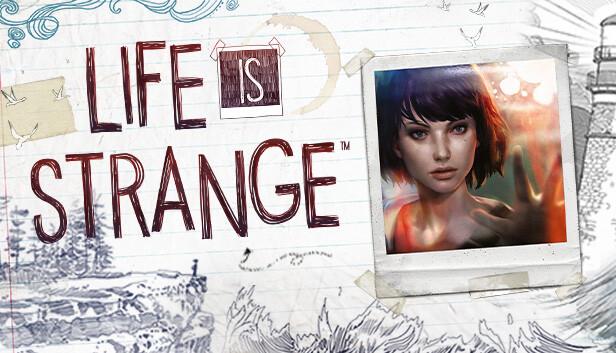I really enjoyed playing (the first episode of) Life is Strange 2, so I played Life is Strange this time!
There are many aspects of femininity in this game, starting with the most obvious, you are playing as a female protagonist, Max Caulfield, in an interactive fiction game. In contrast to visual novels or other forms of narrative-based games, the third-person nature of Life is Strange constantly reinforces the player’s embodiment of the character (since she takes up like 20% of your screen space) and you can see everything Max does. I think this is certainly an important way and first step in creating a feminist game, since perhaps there is some portion of female players who feel alienated by how most games feature male playable characters, which could feel somewhat unnatural (the same way I felt somewhat unnatural walking into the girl’s bathroom in Life is Strange).

Pictured: Max, heroic character, in the middle of adversity
Though of course, merely having prominent female characters doesn’t necessarily mean the game promotes feminist values, such as it mentioned in the reading that many games targeted towards male audiences have sexist portrayals of female characters. In the case of a narrative-based game like Life is Strange, to make a faithful effort to accurately represent the first-hand perspective of a female protagonist shows that feminism matters to the game and the developers behind it.

Pictured: I forgot when we talked about this but this is bad design. These doors cannot be opened by the player, but their look clearly gives them the affordance that they are openable (even other characters can open them)
Within the narrative, there are many male characters who speak or act disrespectfully toward the protagonist, as well as towards other female characters in the game. I’m not sure the game is trying to illustrate any explicit feminist message through this, but more that such methods of interaction are common within parts of our society. Living from the perspective of Max, it makes the player experience what it’s like to be treated this way, which for someone like me is an eye-opening experience, whereas for some females this might be an experience validating their struggles.
Going into the casual gamer discussion in the reading, Life is Strange is designed in a very user-friendly way to accommodate people unfamiliar with third-person controls, with a helpful but mostly unintrusive tutorial system, similar to the ones described in the Plants Versus Zombies talk of a progressive hint system if the game sees the player still isn’t getting how to do something. The item interaction and time rewinding controls are quite unusual, so I appreciated the visual hints for how to use those mechanics. I will say there was one time the game felt a bit like mansplaining when it told me to use Shift to sprint, which I was doing since the start of the game without any prompting (since walking slowly is boring and Shift to sprint is a convention in first and third-person games). Ideally, the game would have detected I’ve sprinted already, and foregone that message. Of course, I’m probably also not the primary intended audience of the game.

Pictured: The “Look” and the primary mouse button icon is what always shows up, and the hint text at the top of the screen shows up when the player still hasn’t figured out how to interact with objects after a while

Pictured: Nice, concise help page




